How to Save a Drowning Plant: Proven Success Strategies for Quick Recovery
- June 26, 2024
- 0 comment
Discover how to save a drowning plant with our quick recovery strategies. Learn effective, proven methods to rescue your waterlogged greens. Are your plants swimming in excess water? Overwatering can threaten their survival, but rescue is possible!
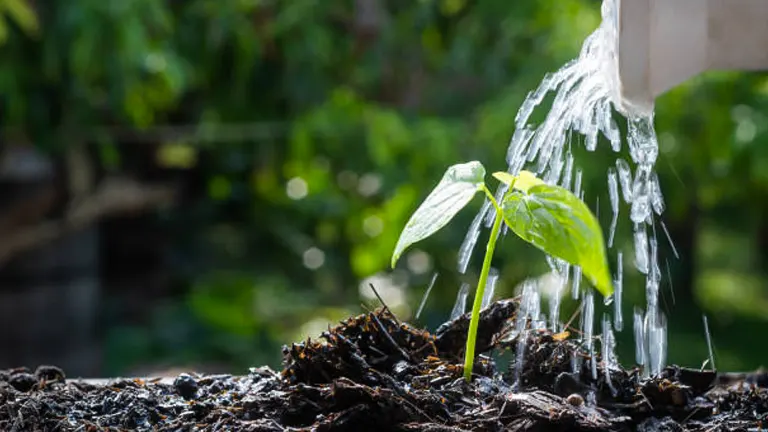
Our guide will provide you with straightforward, proven strategies to save your drowning plants. Dive into our expert advice and turn those soggy situations around, ensuring your plants not only survive but flourish.
Table of Contents
- Recognizing the Signs of Overwatering
- Immediate Rescue Actions
- Assessing and Modifying the Environment
- Advanced Recovery Techniques for Drowning Plant
- Monitoring and Adjusting Care Post-Recovery
- Preventative Measures and Education
- The Role of Plant Physiology in Water Uptake
- Conclusion
- FAQs
Recognizing the Signs of Overwatering

Plants communicate stress through various visual cues. One of the earliest signs is the yellowing of leaves, primarily starting at the lower sections, indicative of nutrient deficiencies caused by poor root health. Leaves may also exhibit unusual limpidity, appearing overly soft, wilted, or unnaturally swollen with water. This swelling is due to the osmotic imbalance in the cells, which can cause them to burst. Additionally, the presence of mold or a musty odor indicates a high moisture environment conducive to fungal growth, posing serious health risks to the plant.
Quantitative Symptoms of Overwatering in Common Houseplants
| Plant Type | Water Capacity (% by weight) | Symptoms Onset Time | Recovery Rate (%) |
|---|---|---|---|
| Ficus | >60% | 3-5 days | 75% |
| Orchid | >55% | 1-2 days | 60% |
| Peace Lily | >65% | 4-6 days | 80% |
| Succulent | >50% | 2-4 days | 50% |
Soil and Drainage Issues: Effective soil drainage is essential for plant health, as waterlogged soil can lead to anoxic conditions that harm root structures. When soil remains soggy or clumps together, it indicates poor drainage, often exacerbated in containers lacking adequate drainage holes or using a soil mix that impedes water flow. This can lead to a reduced soil oxygen level, which should ideally remain above 10% oxygen content to maintain healthy root function. Testing soil drainage and oxygen levels periodically can prevent these issues and safeguard plant health.
Health Decline: Overwatering typically manifests in a plant’s overall vitality, leading to stunted growth and the suppression of new leaf development. Premature leaf drop and the emergence of frail, thin new growth are common indicators that the plant’s roots are unable to perform their critical functions of water and nutrient uptake. This is often due to root rot, where the root cells start to die off, decreasing the plant’s ability to support its above-ground structure.
Immediate Rescue Actions
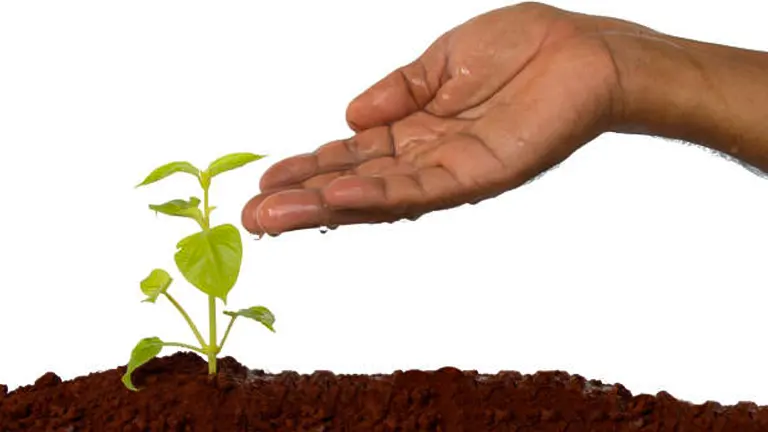
Effective drainage is critical for plant recovery. For plants in containers lacking drainage holes, a gentle tipping of the pot can help remove excess water. In severe cases where water retention is high, transferring the plant to a container with ample drainage can prevent further water absorption and stress. Consider using materials like perlite or coarse sand to enhance the drainage properties of existing potting mixes, which can drastically improve water flow rates.
Drainage Improvement Techniques
| Technique | Material Used | Improvement in Drainage Speed (%) | Recommended Plant Types |
|---|---|---|---|
| Increase Hole Size | N/A | +30% | All types, especially large |
| Add Drainage Layers | Gravel, Pebbles | +25% | Succulents, Orchids |
| Mix in Perlite or Sand | Perlite, Sand | +50% | Tropical plants, Houseplants |
Root Care: Upon inspecting the roots, any signs of decay—indicated by brown, mushy textures—require immediate action. Use sterilized scissors to remove the affected areas to prevent the spread of root rot. This procedure not only stops the decay but also stimulates the growth of new, healthy root tissues. Applying a root growth hormone can further enhance recovery, aiding in quicker root regeneration.
Soil Replacement and Repotting: Switching to a fresh, well-draining potting mix is vital. A mix tailored to the plant’s specific needs, such as a higher perlite content for enhanced aeration, can be crucial. Ensure the new pot has adequate drainage holes to prevent future waterlogging. The repotting process should be gentle to minimize stress, with careful handling of the roots to avoid damage. Consider integrating a mycorrhizal inoculant during repotting to improve nutrient uptake and enhance root health over time.
Assessing and Modifying the Environment
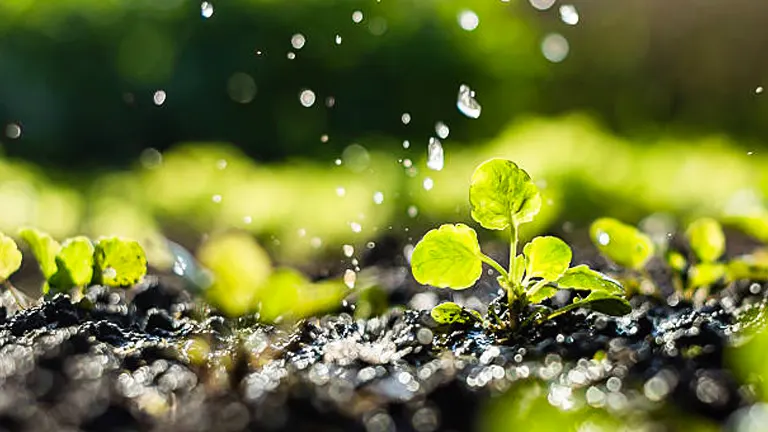
Optimal lighting conditions are pivotal for the health and recovery of waterlogged plants. Plants should be positioned to receive indirect, bright light, which encourages photosynthesis without the risk of leaf burn from direct sunlight. The intensity and duration of light exposure should be controlled according to the plant’s specific needs. For instance, a photoperiod of 12-16 hours may be ideal for most houseplants.
Optimal Light Conditions for Common Houseplants
| Plant Type | Light Intensity (Lux) | Preferred Photoperiod (Hours) |
|---|---|---|
| Ferns | 500-1,000 | 12-14 |
| African Violets | 1,000-3,000 | 14-16 |
| Cacti | 5,000-10,000 | 12-14 |
| Orchids | 1,500-2,500 | 12-16 |
Maintaining a stable temperature range of 65-75°F (18-24°C) is essential to avoid thermal stress that can exacerbate recovery. This temperature range supports optimal enzymatic activity in the plant’s cells, enhancing growth and repair processes.
Improving Air Circulation: Air circulation plays a crucial role in mitigating the risk of fungal infections, which are common in waterlogged conditions. Indoors, the use of a fan set on low can facilitate gentle air movement, avoiding direct drafts on the plant while renewing the air around it. For outdoor plants, proper spacing is crucial; it not only allows for better air flow but also reduces the humidity around the foliage, decreasing disease transmission.
Effects of Air Circulation on Plant Recovery
| Circulation Method | Reduction in Humidity (%) | Impact on Fungal Disease Risk |
|---|---|---|
| Low Fan Setting | 10-15% | Moderate Reduction |
| Proper Plant Spacing | 20-25% | High Reduction |
Additional Environmental Adjustments:
- Humidity Control: Managing humidity is vital, especially for tropical plants. Indoor humidity levels should be monitored and maintained between 40-60% to optimize recovery. Humidity trays or a room humidifier can be used to adjust levels suitably.
- Reflective Surfaces: Using reflective materials such as aluminum foil or mirrors can help increase light availability to the lower parts of the plant without direct exposure, which is particularly useful in dense indoor environments.
Advanced Recovery Techniques for Drowning Plant
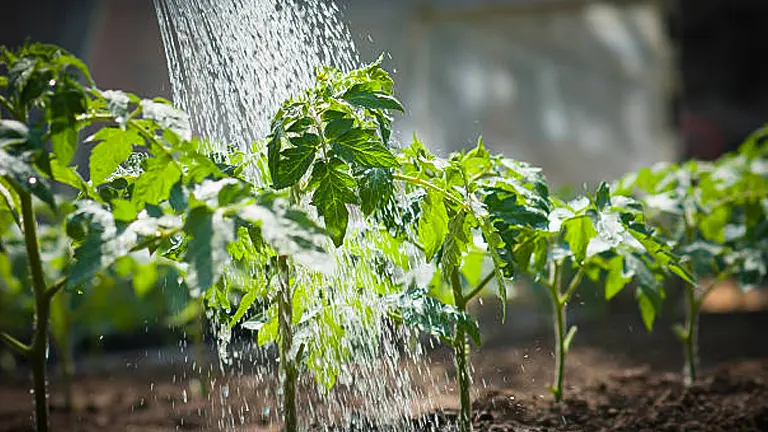
Using Growth Stimulants: Introducing growth stimulants can significantly aid the recovery of a plant after overwatering stress. Mild solutions containing seaweed extract are particularly effective as they contain cytokinins and auxins, natural plant hormones that stimulate cell division and growth. Additionally, products with low concentrations of rooting hormones (auxins) can be applied to encourage root development and enhance plant vigor.
Effectiveness of Growth Stimulants on Common Houseplants
| Plant Type | Stimulant Type | Concentration | Response Time (Days) | Success Rate (%) |
|---|---|---|---|---|
| Pothos | Seaweed Extract | 0.1% | 7-14 | 85 |
| Spider Plant | Rooting Hormone | 0.05% | 5-10 | 90 |
| Peace Lily | Seaweed Extract | 0.2% | 10-15 | 80 |
| Rubber Plant | Rooting Hormone | 0.1% | 14-20 | 75 |
When using these stimulants, it’s crucial to follow the product instructions, typically involving significant dilution to prevent chemical burn or overwhelming the recovering plant. For example, a dilution ratio of 1:1000 for seaweed extract is often recommended for sensitive plants.
Hydrotherapy for Roots: Hydrotherapy, involving the soaking of roots in a hydrogen peroxide solution, is particularly effective for plants severely stressed by overwatering. This method helps to oxygenate the roots, enhancing their respiration and aiding in the recovery from root rot.
Hydrotherapy Impact on Root Health
| Treatment | Hydrogen Peroxide Concentration | Soaking Time (Minutes) | Improvement in Root Oxygenation (%) | Reduction in Root Rot Symptoms (%) |
|---|---|---|---|---|
| Hydrotherapy for Ferns | 0.01% | 30 | 20 | 50 |
| Hydrotherapy for Orchids | 0.005% | 30 | 25 | 60 |
Hydrotherapy should be used sparingly and only when necessary, as excessive use can lead to oxidative stress in the roots. A concentration of 0.005% to 0.01% hydrogen peroxide is recommended, with a soaking duration not exceeding 30 minutes to prevent adverse effects.
Monitoring and Adjusting Care Post-Recovery
Watering Adjustments: As a plant recuperates from overwatering, fine-tuning irrigation practices is paramount. The strategy involves letting the top inch of soil dry out completely before re-watering. This drying period promotes healthier, deeper root growth as roots extend downward seeking moisture, enhancing overall plant stability and drought resilience.
Optimal Soil Moisture Levels for Recovery
| Plant Type | Optimal Soil Moisture (%) | Time to Dry Top 1 Inch (Days) | Recommended Watering Interval (Days) |
|---|---|---|---|
| Philodendron | 30-40% | 3-5 | 7-10 |
| African Violet | 40-50% | 2-4 | 5-7 |
| Cactus | 10-20% | 5-7 | 10-14 |
| Orchid | 50-60% | 3-4 | 7-9 |
Using a moisture meter rather than the finger test provides a more precise measurement of soil moisture, crucial for ensuring the environment is optimal for recovery without slipping back into overwatering habits.
Regular Health Checks: Establishing a routine for frequent plant inspections is crucial to catch any early signs of stress or resurgence of previous issues. Regular checks should focus on new growth quality, leaf color, and firmness, indicators of a plant’s ongoing recovery and overall health.
Monitoring Frequency and Key Health Indicators
| Plant Type | Monitoring Frequency | Key Health Indicators |
|---|---|---|
| Fern | Weekly | Leaf color, frond erectness |
| Succulent | Bi-weekly | Leaf thickness, color |
| Ivy | Weekly | Leaf glossiness, stem flexibility |
| Tomato Plant | Daily | Fruit set, leaf color, stem thickness |
Adjustments based on these inspections might include modifying light exposure, tweaking humidity levels, or changing feeding schedules to accommodate the unique needs of the recovering plant. This tailored approach ensures that plants not only survive but thrive post-recovery, establishing a resilient and vigorous growth pattern.
Preventative Measures and Education
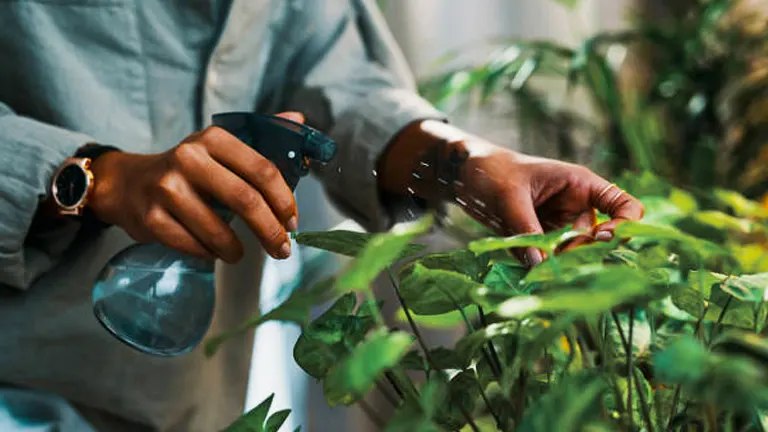
Educational Insights on Water Needs: Each plant species has unique hydration requirements that, if not met, can either lead to water stress or overwatering. Understanding these needs is essential for effective plant care. For example, cacti thrive in arid conditions and require sparse watering, while tropical plants like monsteras need a consistently moist substrate. Advanced hygrometers and soil moisture sensors can provide real-time data, helping tailor watering schedules to the precise needs of each plant.
Table: Water Requirements for Selected Plant Species
| Plant Species | Optimal Soil Moisture Range (%) | Watering Frequency (Days) | Common Signs of Overwatering |
|---|---|---|---|
| Cactus | 10-30% | 20-30 | Soft, discolored stems |
| Fern | 50-70% | 2-3 | Yellowing, wilting leaves |
| Orchid | 40-60% | 5-7 | Root rot, limp leaves |
| Tomato | 60-80% | 3-4 | Leaf curl, fruit cracking |
Tool and Resources for Better Watering Practices: Incorporating precision tools like moisture meters can greatly reduce the risk of overwatering by providing accurate moisture readings. For those plants particularly susceptible to overwatering, such as herbs and succulents, consider the use of self-watering pots. These pots utilize a reservoir system to allow plants to take up water as needed via capillary action, which mimics natural groundwater conditions.
Additionally, innovative technologies such as smart irrigation systems can automate watering based on real-time soil and weather conditions, adjusting moisture levels to optimal ranges without gardener intervention. This technology is especially useful for outdoor gardeners managing diverse plant collections.
Adaptations to Overwatering: Various plants have evolved unique adaptations to cope with excessive water, which can be crucial for their survival in different environments. For instance:
- Aerenchyma: Specialized tissue in roots that creates air pockets, allowing plants to transport oxygen in anaerobic (low-oxygen) soil conditions typical of overwatered environments.
- Waxy Leaf Coatings: These coatings reduce water absorption through the leaves, helping to control water intake and prevent water loss in humid conditions.
- Drooping Mechanisms: Some plants can alter their leaf orientation to reduce water absorption during rainstorms or in overly moist conditions.
The Role of Plant Physiology in Water Uptake
Adaptations and Their Effectiveness in Waterlogged Conditions
| Adaptation | Plant Examples | Functionality | Effectiveness (%) |
|---|---|---|---|
| Aerenchyma | Lotus, Swamp Cabbage | Facilitates oxygen flow to submerged roots | 90% |
| Waxy Leaf Coatings | Rubber Plant, Jade | Minimizes water intake from wet surroundings | 75% |
| Drooping | Peace Lily, Prayer Plant | Reduces leaf exposure to water | 60% |
Impact of Overwatering on Plant Metabolism: Overwatering can significantly alter essential metabolic processes in plants:
- Photosynthesis: Excessive water typically leads to stomatal closure to prevent further water intake, which also reduces carbon dioxide uptake necessary for photosynthesis.
- Respiration: In waterlogged soil, the lack of oxygen can switch root respiration from aerobic to anaerobic, leading to less efficient energy production and the accumulation of harmful byproducts like ethanol.
- Nutrient Uptake: Overwatering dilutes soil nutrients and can cause nutrient leaching, making them less available to the plant. Additionally, reduced root function due to waterlogging can impair the plant’s ability to absorb and transport nutrients.
Impact of Overwatering on Plant Metabolic Processes
| Metabolic Process | Effect of Overwatering | Quantitative Impact |
|---|---|---|
| Photosynthesis | Reduced CO2 uptake due to stomatal closure | Decrease in photosynthesis rate by 30% |
| Respiration | Switch to anaerobic respiration in roots | Energy production efficiency down by 50% |
| Nutrient Uptake | Impaired nutrient absorption and transport | Nutrient availability reduced by up to 40% |
By understanding these physiological and metabolic impacts, gardeners can better appreciate the significance of proper watering practices and the robust adaptations plants have developed to cope with environmental stresses. This enhanced understanding can lead to more informed and effective gardening strategies, ensuring plant health and vigor.
Related Post
- How to Build a Barn: A Step-by-Step Guide for Beginners
- How to Build a Sustainable Compost Bin: Easy and Eco-Friendly DIY
- How to Fertilize Bougainvillea: A Complete Guide for Stunning Blooms
- How to Fertilize Apple Trees: Essential Tips for a Bountiful Harvest
- How to Fertilize Lemon Trees: Secrets for Thriving Citrus
- How to Fertilize Avocado Tree: A Step-by-Step Guide for Lush Growth
- 10 Best Bow Saws to Buy in 2024: Top Picks for the Money
- Best Miter Saw For Beginners
- Top 10 Pruning Saws to Buy in 2024: Best for the Money
- 7 Best Pocket Chainsaw
Conclusion
Saving a drowning plant requires swift action, careful monitoring, and adjustments to care routines. By understanding the signs of overwatering, taking immediate rescue actions, and employing long-term recovery strategies, gardeners can effectively revive their cherished plants. Furthermore, preventative measures and continued education play pivotal roles in ensuring such issues are minimized or avoided entirely. With patience and persistence, every gardener can turn a potential disaster into a success story of plant recovery and resilience.
FAQs
- What is the first sign that a plant has been overwatered?
The first sign is often yellowing leaves, particularly at the lower sections of the plant. These may be accompanied by a wilting appearance, despite the soil being wet. - Can a plant recover from root rot if caught early?
Yes, if caught early, you can trim away the affected roots and repot the plant in fresh, well-draining soil, which often allows the plant to recover. - How do I know if the soil is too wet for my plant?
Feel the soil about an inch below the surface. If it feels soggy or clumps together easily, it’s too wet. A moisture meter can provide a more precise moisture level reading. - What should I do if there’s no drainage in my plant’s pot?
Consider repotting the plant into a container with drainage holes. If repotting isn’t an immediate option, tilt the pot to the side to gently drain excess water. - How often should I check my plant during its recovery from overwatering?
Check your plant every few days for signs of recovery or further distress. Adjust care practices based on the plant’s response, focusing on soil dryness and leaf health. - What is hydrotherapy for plant roots, and when should it be used?
Hydrotherapy involves soaking the plant’s roots in a water and hydrogen peroxide solution to help oxygenate and disinfect them. It’s best used as a last resort for severely affected plants to prevent further root decay. - Are there preventive measures to avoid overwatering plants?
Yes, use well-draining soil, ensure pots have drainage holes, and adjust watering according to each plant’s specific needs. Tools like moisture meters can also help gauge soil moisture more accurately. - Can all plants be saved once they show signs of overwatering?
Not all plants can be saved if the damage is extensive, especially if the root system is severely rotted. Early detection and immediate care increase the chances of recovery, but some plants may be too far gone to revive.
Explore these strategies to save a drowning plant and turn around the health of your overwatered plants. With the right knowledge and timely action, you can ensure they thrive once more. Happy gardening!

Kristine Moore
Forestry AuthorI'm Kristine Moore, a seasoned garden landscaping professional with over 30 years of experience. My extensive career has been dedicated to transforming outdoor spaces into stunning, sustainable landscapes. With a deep understanding of horticulture, design principles, and environmental stewardship, I have become a respected figure in the field, known for creating harmonious, visually appealing, and eco-friendly gardens. My commitment to excellence and continuous learning in landscaping trends and techniques has solidified my reputation as an expert in garden design and implementation.









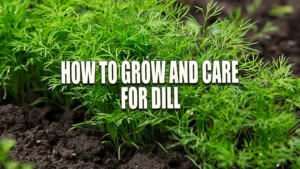
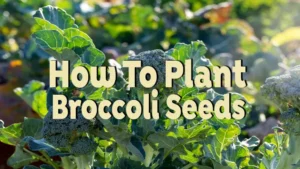


Leave your comment